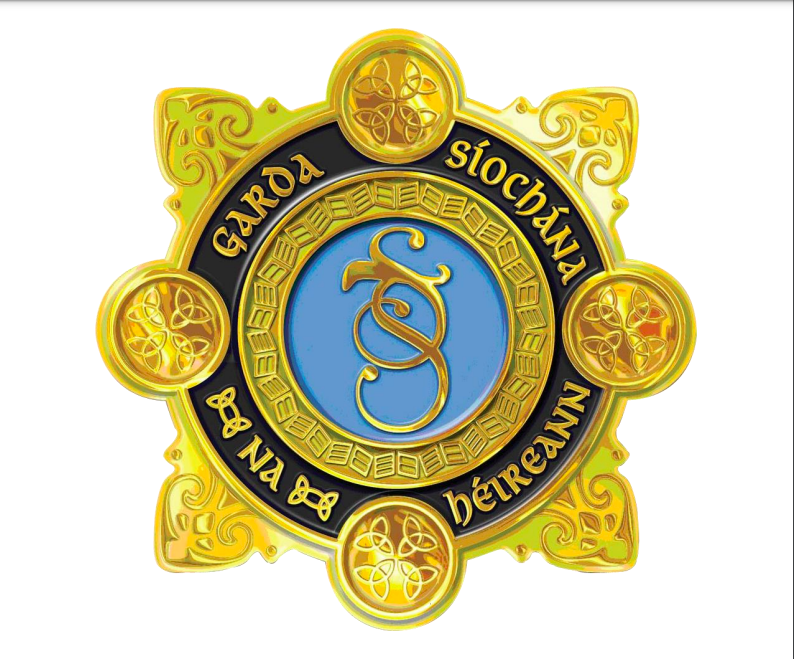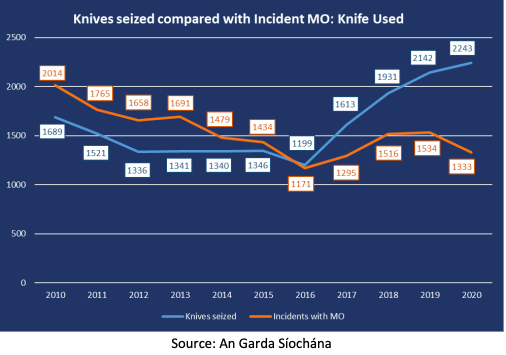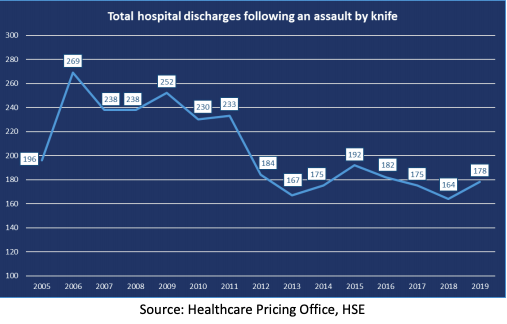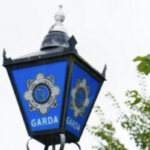Analysis of Knife Crime Data – February 2021

There is no one specific offence of knife crime, so when considering trends in knife related crime it is important to look at multiple perspectives to get the complete picture.
Knife related crime trends should also be viewed in the context of the COVID-19 pandemic and the associated general decrease in criminality, but also the successful number of proactive seizures and intervention – taking knives out of circulation is positive.
There are three key perspectives – the number of knives seized, the number of crime incidents where a knife was involved, and the number of people discharged from hospital following an assault with a knife.
While there was a decline in overall knife seizures during 2010-2016, An Garda Síochána has increased the number of knives seized each year since then.
The 2016-2018 increase in recorded seizures is due in large part to the introduction of the Property and Exhibit Management System (PEMS) which improved the level of recording of all objects seized, including knives. More recently, the increases in seizures are also due to proactive policing operations, particularly during 2020 with the increased Garda presence due to COVID-19.
During 2020, knives accounted for a lower proportion of all objects seized than ever before (1.4%)
There was a 4.7% (5%) increase in the number of knives seized between 2019-2020 (2,142 in 2019 and 2,243 in 2020)
There was also a substantial year-on-year increase in the number of searches conducted in 2020 – many of which were associated with An Garda Síochána’s high visibility operations due to COVID-19
There was a reduction in the number of incidents where knives were involved (Knife MO)_ between 2019 and 2020 – 1,534 in 2019 versus 1,333 in 2020.
The knife MO includes cases where an offender may have been in possession of a knife and used it to threaten but not carry out an assault or cause injury.
The most recent available HSE data (2005-2019) shows a general decline in hospital discharges following an assault by knife since 2006. This is consistent with the trend shown by Garda data on crime incidents where a knife was involved.
While there was a slight increase in hospital discharges following an assault by knife between 2018 and 2019, these remain considerably lower than those seen up to 2011 and below the slight rises seen between 2013 and 2015 While there is no strong evidence to suggest that there has been any increase in crimes incidents involving knives, the downward trend should not detract from the fact that there have been a number of very serious and fatal incidents in recent months as a result of knife assaults.
The national picture is reasonably consistent across Garda divisions but as part of our progress towards information led policing we continue to assess more granular evidence to inform specific policing actions on further reducing knife crime and measure their effectiveness.
All emerging and on-going crime trends are regularly monitored as part of daily operational work conducted in An Garda Síochána.


Data Methodology Note
The seizures and MO (modus operandi) information reported above is taken from PULSE as of 02/02/2021, it is operational and liable to change. Crime counting rules were not applied so as to reflect all PULSE records/activity.
More than one knife may be seized in an incident and figures here relate to the numbers of individual knives (not incidents). There are known data recording issues in respect of this MO which are being addressed as part of the overall data quality improvement strategy.
There is likely therefore to be some under-recording but the overall trends are representative. There are also a variety of other types of weapons/instruments which may be used to threaten/injure, such as scissors and other sharp implements.
The figures above are based on knives only. It is also important to note that the Covid-19 related restrictions in effect for much of 2020 represent a unique set of circumstances which make comparison with other years difficult. In general, at a national level and as has been previously published, the majority of crime types declined in 2020 when compared to 2019.
A small number of types of crime, largely those which are enforcement driven, increased between 2019 and 2020. The higher levels of checkpoints and patrols in 2020 will have contributed to a higher number of knives seized. The lower levels of other crime types will have contributed to a lower number of incidents in which a knife was present/used.
All crime is not reported so data from the Health Service Executive on hospital discharges is used as a complimentary, independent measure, within the Garda Síochána to provide additional insight when assessing trends. The Healthcare Pricing Office of the Health Service Executive, supply figures on request of the number of acute hospital discharges, as recorded on the Hospital In-Patient Enquiry (HIPE) system.
The data from HIPE includes any discharge with a listed principal diagnosis of ICD 10-AM Code X99.0 Assault by Knife. Discharges include day cases and in-patient admissions. These figures do not include data based on patients attending Accident and Emergency departments only.
As HIPE figures relate to patients who have been admitted to hospital, they are likely to reflect some of the most serious injuries resulting from assaults with knives.






